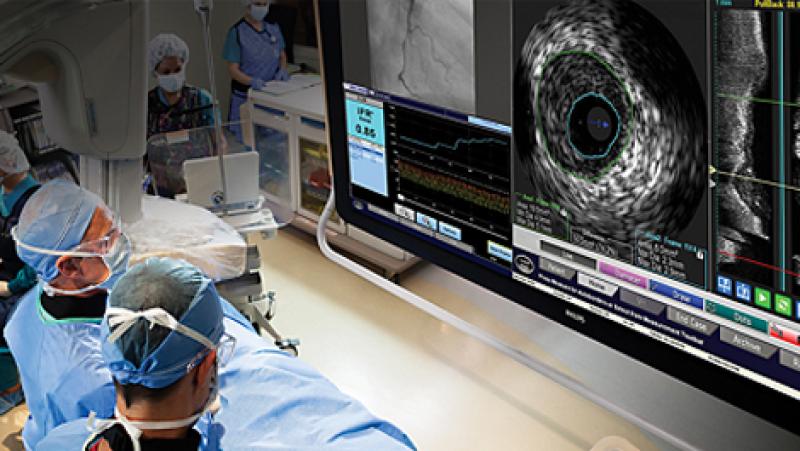The rapid advancement in medical technology has brought about revolutionary improvements in clinical practices, particularly through the adoption of Image Guided Therapy Systems (IGTS). These systems utilize real-time imaging techniques to enhance the precision and efficacy of minimally invasive surgeries and diagnostic procedures. Designed to guide surgeons during interventions, IGTS integrates imaging modalities such as MRI, CT, ultrasound, and fluoroscopy to provide detailed visualization of anatomical structures. This article explores the growing significance, technological evolution, clinical applications, and the broader market landscape of Image Guided Therapy Systems.
Technological Developments Driving Image Guided Therapy Systems Innovation
Image Guided Therapy System have evolved from the simple use of static images for surgical planning to sophisticated platforms capable of providing real-time, three-dimensional visualization. Key technological breakthroughs include advanced imaging software, robotics integration, and enhanced navigation tools that allow for greater accuracy and reduced procedural risks. The incorporation of artificial intelligence and machine learning algorithms in recent systems has improved image analysis, enabling more precise localization of lesions and critical structures. Moreover, hybrid ORs equipped with multi-modal imaging devices are facilitating the seamless execution of complex therapies, thus minimizing patient trauma and shortening recovery times.
Expanding Clinical Applications Enhancing Medical Treatment Outcomes
The use of Image Guided Therapy Systems spans a wide array of medical specialties including oncology, cardiology, neurosurgery, and orthopedics. Within oncology, these systems assist in accurate tumor localization and targeted therapies, significantly improving treatment success rates while preserving surrounding healthy tissue. In cardiology, IGTS is essential for catheter-based interventions like stent placement and electrophysiology studies, promoting safer and more effective procedures. Neurosurgeons rely heavily on precise navigation and imaging guidance to operate on delicate brain regions with minimal invasiveness. The orthopedic domain also benefits from enhanced imaging for joint replacements, fracture fixations, and spinal surgeries, enabling better alignment and postoperative results.
Market Dynamics Influencing Growth and Adoption of Advanced Therapy Systems
The escalating demand for minimally invasive treatment options coupled with rising patient awareness about advanced surgical technologies is driving the robust growth of Image Guided Therapy Systems globally. Increasing healthcare expenditures by governments and private sectors have led to enhanced infrastructure supporting the deployment of such systems in hospitals and specialty clinics. Furthermore, ongoing research and development activities aimed at product innovation, as well as partnerships between healthcare providers and technology manufacturers, are contributing to market expansion. Regulatory approvals for novel devices and software solutions are also facilitating the penetration of IGTS in emerging healthcare markets across Asia-Pacific, Latin America, and the Middle East.
Navigating In-Depth Reports on Image Guided Therapy System Market Trends
For stakeholders seeking detailed insights into the evolving trends, competitive landscape, and future growth prospects, comprehensive analytical reports provide invaluable information. These reports cover segmentation analysis by product type, application, end-use, and geography, alongside forecasts that assist investors, manufacturers, and healthcare providers in strategic decision-making. Such documents include extensive data on technological advancements, key players’ profiles, recent product launches, and investment opportunities shaping the industry. Accessing these specialized market intelligence resources can significantly enhance understanding of dynamic market forces and emerging clinical innovations in the image guided therapy domain.
Commercial Advantages and Adoption Drivers of Image Guided Therapy Systems
Hospitals and surgical centers are increasingly investing in image guided therapy platforms to improve patient outcomes and optimize resource utilization. The minimally invasive nature of procedures supported by these systems leads to reduced hospital stays, less postoperative pain, and faster recovery, ultimately lowering healthcare costs and improving patient satisfaction. Additionally, image guided interventions empower clinicians with enhanced precision, reducing complications and the need for revision surgeries. The growing emphasis on personalized medicine further strengthens market demand, as therapies tailored with high-resolution imaging and navigation prove more effective. Reimbursement policies adapting to innovative surgical technologies are also key factors encouraging adoption and boosting return on investment for healthcare providers.
Get this Report in Japanese Language: 画像誘導療法システム市場
Get this Report in Korean Language: 이미지 유도 치료 시스템 시장
About Author:
Money Singh is a seasoned content writer with over four years of experience in the market research sector. Her expertise spans various industries, including food and beverages, biotechnology, chemical and materials, defense and aerospace, consumer goods, etc. (https://www.linkedin.com/in/money-singh-590844163
